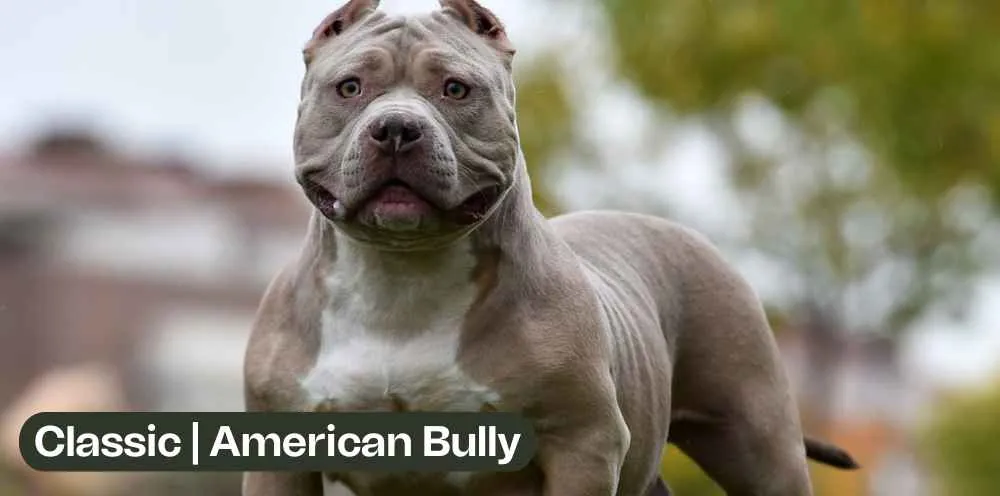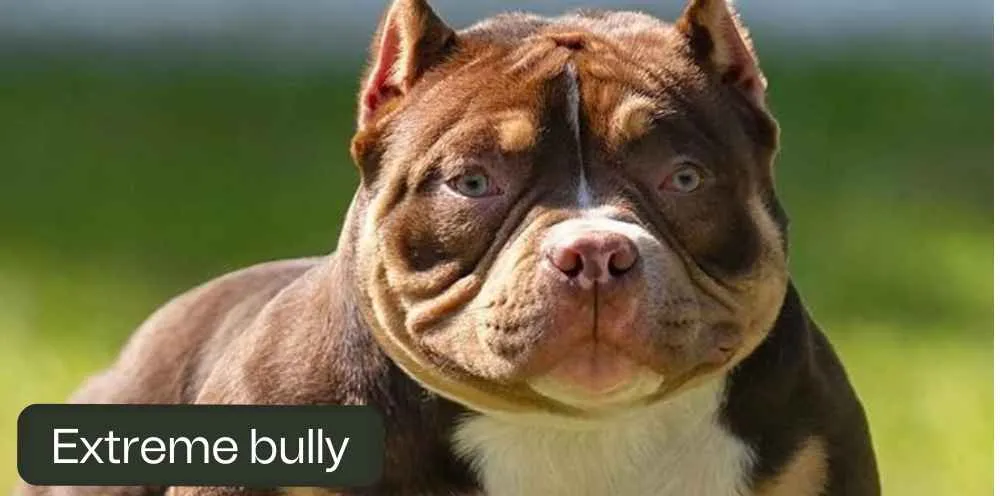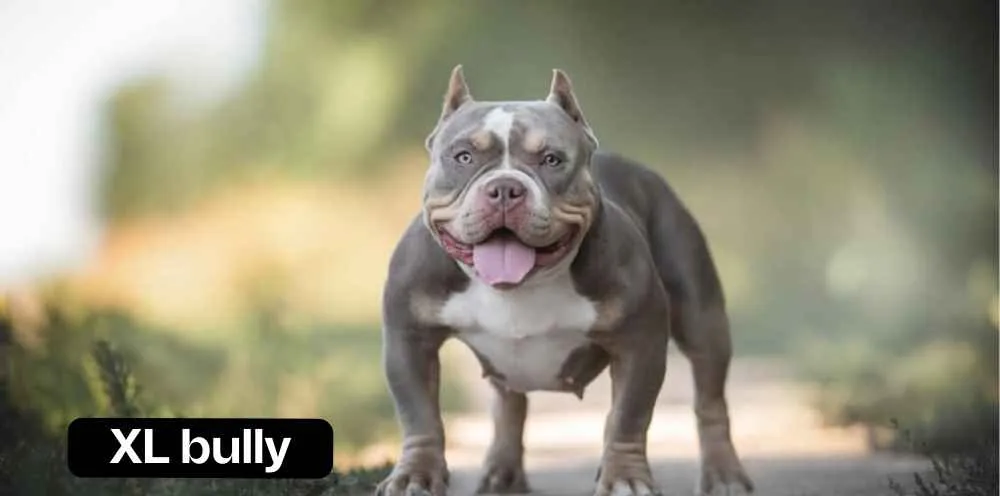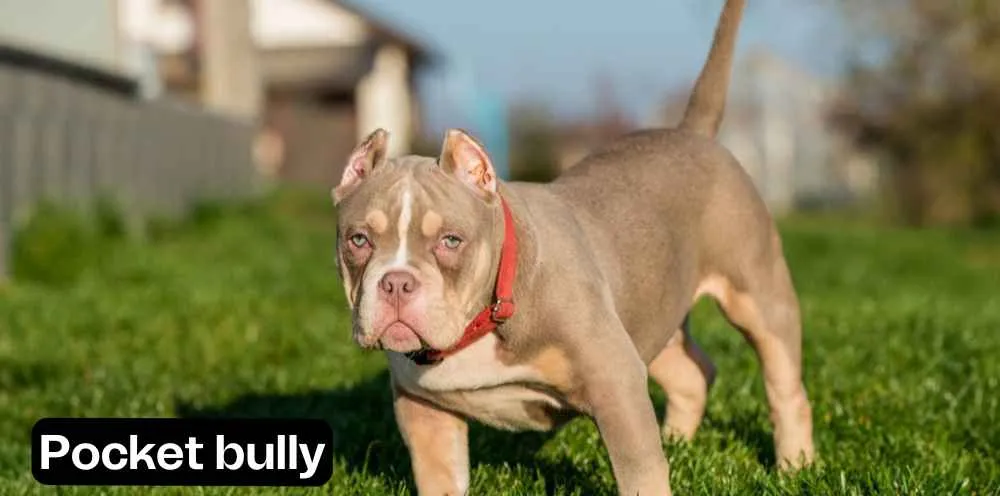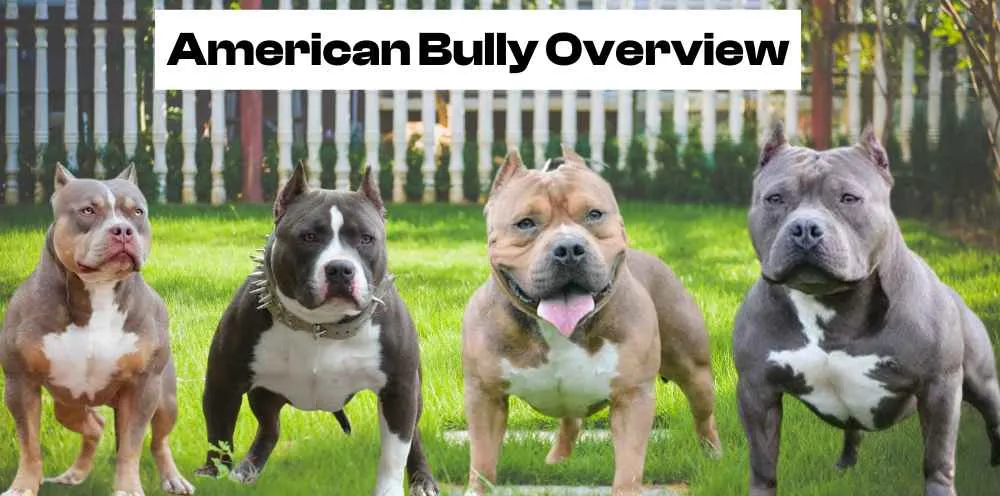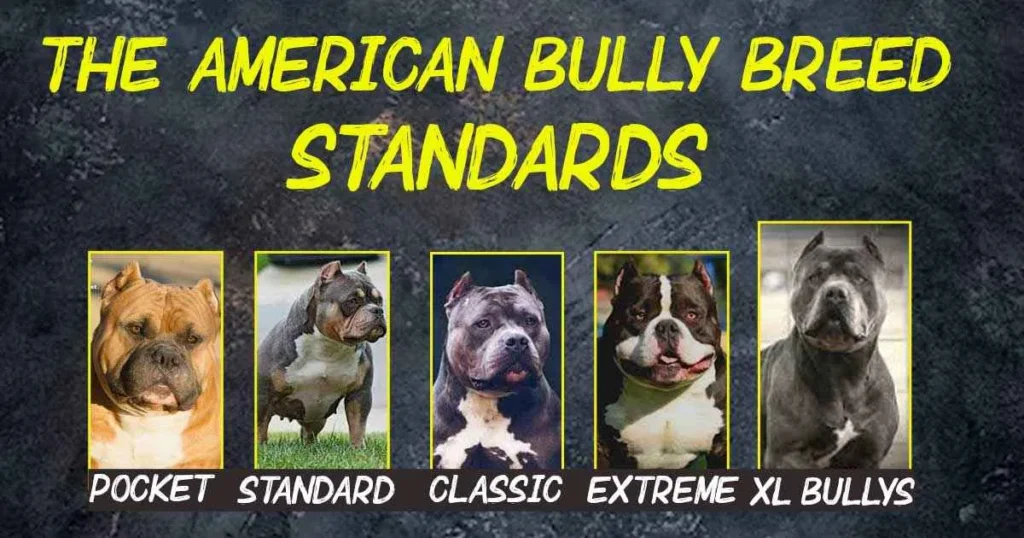American Bully breeds have garnered immense popularity among dog enthusiasts worldwide for their unique blend of strength, loyalty, and gentle temperament. Originating from the United States, these breeds have evolved into distinct types, each with its own set of physical attributes, temperament traits, and care needs.
Understanding the nuances of American Bully types is crucial for potential owners and enthusiasts alike to make informed decisions regarding breed selection, training methods, health care, and responsible ownership practices.
In this comprehensive guide, we will delve into the diverse world of American Bully types, exploring their characteristics, suitability for different lifestyles, training requirements, health considerations, and dispelling common myths associated with these wonderful dogs.
Overview of American Bully Types
American Bully breeds are known for their impressive physical stature, friendly demeanor, and versatility in various lifestyles. Understanding the different types within this breed is essential for potential owners to choose the most suitable companion for their lifestyle and preferences.
Here, we will provide an overview of the four main American Bully types: Standard, Classic, Extreme Bully (Exotic Bully, Pocket, and XL, highlighting their distinctive characteristics and suitability for different environments.
1.Standard American Bully
The Standard American Bully stands out as a beloved and sought-after breed within the larger American Bully category. Renowned for their balanced size, impressive muscular build, friendly disposition, and adaptability to various lifestyles, Standard Bullies have earned a special place in the hearts of dog enthusiasts.
Their medium-sized stature, coupled with a well-defined muscular structure, showcases their strength and athleticism while maintaining an approachable and gentle appearance. Beyond their physical attributes, Standard Bullies are known for their friendly and sociable nature, forming strong bonds with their human companions and coexisting harmoniously with other pets when properly socialized.
They exhibit loyalty, playfulness, and a stable temperament, making them ideal family pets and reliable companions. With consistent training, socialization, and adequate exercise, Standard American Bullies thrive in diverse environments, whether in spacious suburban homes or urban apartments with access to outdoor spaces.
Their versatility, coupled with their affectionate nature, underscores their suitability for individuals and families seeking a loyal and loving canine companion.
Physical Characteristics
| Characteristic | Description |
| Size | Medium-sized dogs, males 17-20 inches tall |
| Muscular Build | Well-defined muscles, especially in chest |
| Head and Face | Broad skull, defined jawline, expressive eyes |
| Coat | Short, smooth coat, various colors and patterns |
Temperament and Personality Traits
- Friendly: Standard American Bullies are known for their friendly and sociable nature towards humans and other pets when properly socialized.
- Loyal: They form strong bonds with their owners and exhibit loyalty and protective instincts, making them excellent family companions.
- Playful: Despite their muscular appearance, they have a playful and fun-loving demeanor, enjoying interactive play sessions and outdoor activities.
- Stable Temperament: With consistent training and socialization, they develop a stable and well-adjusted temperament, showing confidence in various situations.
Training and Socialization Needs
- Basic Obedience: Teach commands such as sit, stay, come, and leash manners early on to establish good behavior.
- Positive Reinforcement: Use treats, praise, and play as rewards for desired behaviors to encourage learning and cooperation.
- Socialization: Expose them to different environments, people, dogs, and stimuli to prevent behavioral issues and promote sociability.
Suitability for Different Lifestyles
- Regular Exercise: Standard Bullies need daily walks, playtime, and engaging activities to stay healthy and maintain muscle tone.
- Affection and Interaction: They thrive on companionship and enjoy being part of family activities, making them suitable for households with active lifestyles or children.
- Space Consideration: While they can adapt to apartment living with sufficient exercise, access to outdoor spaces benefits their overall well-being.
2.Classic American Bully
The Classic American Bully represents a prominent type within the American Bully breed, known for its robust physique, friendly demeanor, and suitability for various lifestyles. Below is an in-depth exploration of their physical characteristics, temperament traits, training needs, and suitability considerations, presented with a detailed table and bullet points.
The Classic American Bully stands out as a distinguished and sought-after type within the American Bully breed, renowned for its impressive physical stature, friendly disposition, and adaptability to various lifestyles. These dogs typically have a larger build compared to Standard Bullies, with males reaching heights of 18 to 21 inches at the shoulders, showcasing their powerful frame and well-defined muscles.
Their broad, blocky heads and strong jawlines add to their imposing yet approachable appearance. Beyond their physical attributes, Classic Bullies are known for their gentle and sociable nature, forming strong bonds with their families and displaying protective instincts when needed. They exhibit a playful and energetic demeanor, enjoying interactive activities and regular exercise.
With proper training emphasizing positive reinforcement techniques and early socialization, Classic American Bullies thrive as loyal and devoted companions, making them excellent choices for families and individuals seeking a loving and versatile canine companion.
Their combination of strength, loyalty, and friendly temperament cements their popularity among dog enthusiasts and highlights their suitability for a range of living environments.
Physical Characteristics
| Characteristic | Description |
| Size | Larger than Standard Bully, males 18-21 inches |
| Muscular Build | Well-defined muscles, powerful frame |
| Head and Face | Broad, blocky head, strong jawline |
| Coat | Short, glossy coat, various colors and patterns |
Temperament Traits
- Gentle and Sociable: Classic American Bullies are known for their gentle nature and sociable demeanor.
- Protective Instincts: They exhibit protective instincts towards their families, making them reliable watchdogs.
- Playful and Energetic: Despite their size, they enjoy playtime and interactive activities, showing energy and enthusiasm.
- Trainable: They respond well to positive reinforcement training methods, making obedience training effective.
Training Needs
- Obedience Training: Early and consistent training is crucial to establish good behavior patterns.
- Positive Reinforcement: Use treats, praise, and rewards to reinforce desired behaviors and strengthen the bond.
- Exercise and Stimulation: Provide regular exercise and mental stimulation to keep them physically and mentally fit.
3.Extreme Bully
The Extreme Bully is a striking type within the American Bully breed, known for its exaggerated muscular build, distinctive appearance, and unique traits.
Here, we will delve into the specific physical characteristics, temperament traits, training needs, and suitability considerations for Extreme Bully dogs, presented with a detailed table and bullet points.
Physical Characteristics
| Characteristic | Description |
| Size | Compact yet muscular, males 17-20 inches at shoulders |
| Muscular Build | Exaggerated muscle definition, especially in shoulders |
| Head and Face | Broad skull, wide-set eyes, pronounced jawline |
| Coat | Short, glossy coat, various colors and patterns |
Training Needs
- Consistent Leadership: Establishing clear leadership through consistent training and boundaries is essential for Extreme Bully dogs.
- Positive Reinforcement: Use rewards, praise, and positive reinforcement techniques to encourage desired behaviors and obedience.
- Socialization: Early and ongoing socialization with various people, pets, and environments helps reduce potential aggression and promotes positive interactions.
Suitability Considerations
- Experienced Owners: Due to their strong personalities and protective instincts, Extreme Bully dogs are best suited for experienced owners familiar with handling powerful breeds.
- Secure Environment: They thrive in homes with secure fencing and proper containment to prevent escape attempts.
- Physical Exercise: Regular exercise and mental stimulation are crucial to channel their energy positively and maintain muscle health.
4.XL Bully
The XL Bully, a notable type within the American Bully breed, is characterized by its substantial size, impressive muscular build, and friendly temperament. showcasing their powerful frame and well-defined muscles, especially in the chest and legs.
Despite their imposing appearance, XL Bullies are known for their gentle and affectionate nature, making them excellent companions for families and individuals seeking a loyal and protective canine companion.
Their loyalty and protective instincts, combined with adaptability and sociability, make XL Bullies well-suited for various living environments, including homes with children.
One fascinating aspect of this breed is its diverse lineage, which includes influences from various dog breeds as well as, surprisingly, the American Bully bloodline Early training, positive reinforcement techniques, and regular exercise are essential for maintaining their physical health and mental well-being.
Overall, XL Bullies exemplify a harmonious blend of size, strength, loyalty, and gentleness, enriching the lives of their owners with their loving and devoted companionship.
Physical Characteristics
| Characteristic | Description |
| Size | Extra-large breed, males reach 20-23 inches |
| Muscular Build | Massive muscles, especially in chest and legs |
| Head and Face | Broad skull, strong jawline, expressive eyes |
| Coat | Short, dense coat, various colors and patterns |
| Color Patterns | Common colors include brindle, fawn, black, blue |
Temperament Traits
- Gentle Giants: XL Bullies are known for their gentle and affectionate nature despite their imposing size.
- Loyal and Protective: They are fiercely loyal to their families and exhibit protective instincts when needed.
- Mild-Mannered: XL Bullies tend to have a calm and even-tempered demeanor, making them suitable for various households.
- Good with Children: They are often excellent companions for children due to their patient and tolerant nature.
Training Needs
- Early Training: Start training and socialization from a young age to establish good behavior patterns.
- Positive Reinforcement: Use positive reinforcement techniques such as treats, praise, and rewards for desired behaviors.
- Consistent Leadership: Establish yourself as a confident and consistent leader to prevent behavioral issues.
5.Pocket Bully
The Pocket Bully, a unique type within the American Bully breed, offers a compact yet muscular companion known for its friendly demeanor and adaptability. Their broad skull, proportional muzzle, and expressive eyes add to their charming appearance.
In addition to their physical attributes, Pocket Bullies are known for their friendly and sociable nature, readily forming strong bonds with their families while displaying remarkable loyalty and devotion.
They are adaptable to various living environments, including apartments, thanks to their moderate exercise needs and playful disposition.
Early training, positive reinforcement methods, and consistent socialization contribute to their well-balanced temperament, making Pocket Bullies excellent companions for individuals and families seeking a loving and compact canine companion.
Physical Characteristics
| Characteristic | Description |
| Size | Small to medium-sized breed, typically 13-17 inches |
| Muscular Build | Well-defined muscles, compact yet sturdy frame |
| Head and Face | Broad skull, proportional muzzle, expressive eyes |
| Coat | Short, glossy coat, various colors and patterns |
| Color Patterns | Common colors include tri-color, brindle, and fawn |
Temperament Traits
- Friendly and Sociable: Pocket Bullies are known for their friendly and sociable nature, making them excellent companions for families and individuals.
- Loyal: They form strong bonds with their owners and are loyal and devoted companions.
- Adaptable: Despite their size, Pocket Bullies adapt well to various living environments, including apartments and smaller homes.
- Playful: They enjoy playtime and interactive activities, showcasing a playful and energetic demeanor.
Training and Exercise Needs
- Basic Obedience: Early training focusing on basic commands and socialization is essential for well-behaved Pocket Bullies.
- Utilize positive reinforcement methods like offering treats, praise, and rewards to encourage and reinforce desired behaviors
- Moderate Exercise: Pocket Bullies require regular but moderate exercise to maintain their muscle tone and mental stimulation, including walks and playtime.
Conclusion
In conclusion, American Bully breeds offer a delightful blend of strength, companionship, and loyalty. By understanding their types, traits, and care needs, owners can forge fulfilling relationships with these remarkable dogs while promoting responsible ownership within the community.

